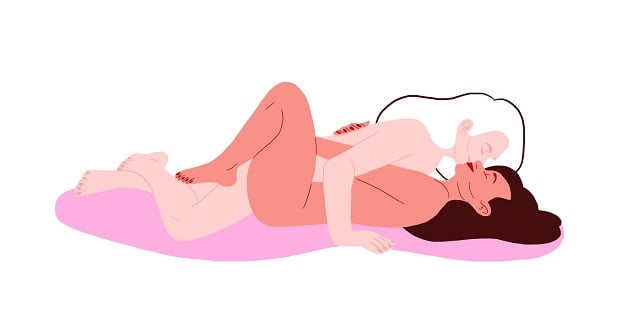Orientalist Porn: Harems And Slave Girls
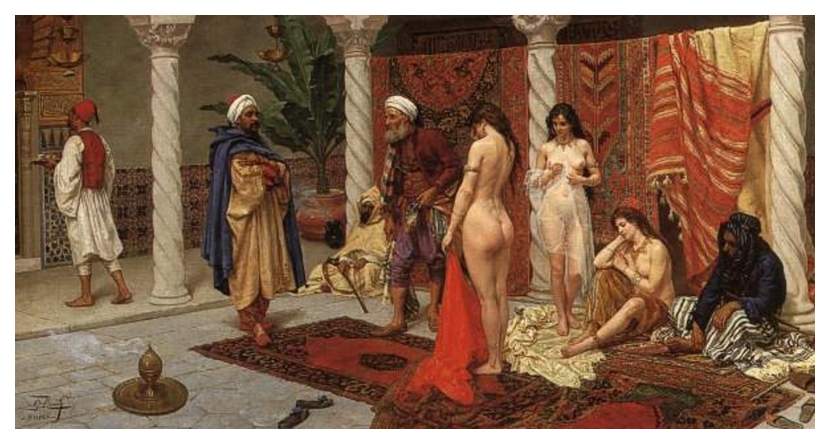
Some months ago I wrote here on VPornBlog about centuries of rapacious Viking invasions. The Vikings, I claim, scarred the European sexual imagination so badly that the marks can still be seen in modern pornography. Today it’s my aim to suggest that down south and east, similar centuries of traumatic conflict with Ottoman Turks and Moorish pirates, raiders, and slavers created the 19th-century porn genre we now call Orientalist art.
In the 19th century when steamships made it fashionable and cheap for working artists to travel, they began visiting North Africa and the Middle East in droves. They visited the cities of “the Orient”, the ancient ruins and old-but-living buildings alike. They contemplated up close the lost legacy of the eastern half of the old broken Roman empire. The painful conquest by the Ottoman Turks. The enduring cultural power of Constantinople. The sheer not-European-ness of it all!
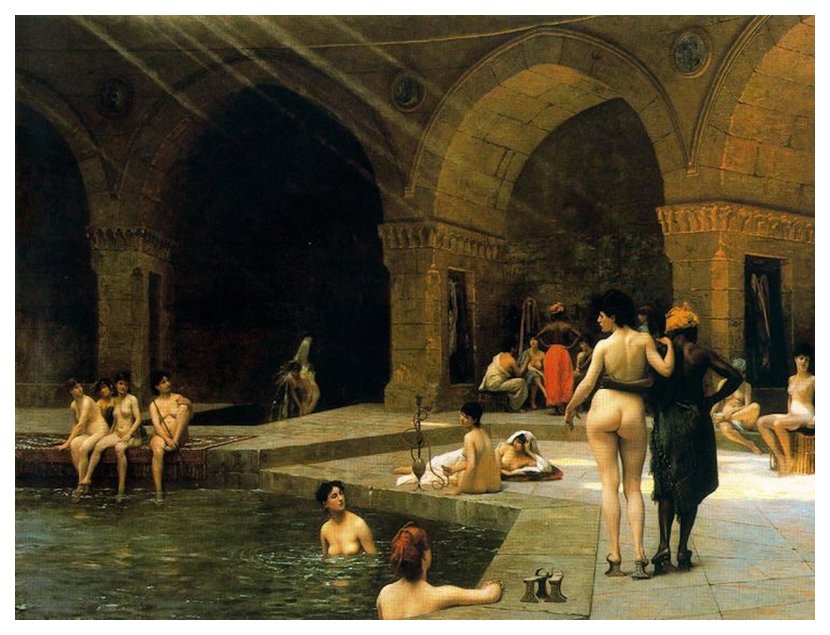
Luckily for us, they found it all incredibly sexy. So they began churning out endless square acres of lurid canvases. Naked people in public baths. Harem scenes, slaves at public auction. Snake charmers, belly dancers, every manner of skin-heavy exoticism that you can imagine. If it had skin and jewelry they painted it! No extra charge for subtexts of conquest, surrender, dominance, submission, power, or helplessness.

Today we call this flowering of smut “Orientalist” paintings, but in the era, it hit the market as nothing more nor less than easy-to-sell pornography. These lurid paintings pushed all the right cultural buttons for European audiences. In an era when strongly sensual art in European settings was often taboo, Orientalist art got a free pass. Why? Maybe because of exoticism, maybe because of cultural bias. Or maybe a mix of both.
Let me explain what I mean. In the USA, National Geographic used to sell magazines with topless African women in grass skirts to a prudish American public, because (a) African women came from an exotic culture where toplessness was “normal” and (b) publication of the photos came with a strong racist subtext that African women weren’t really people anyway. Likewise, Orientalist paintings in Europe present sensuality in an imagined or fanciful cultural context where bare skin is normal. Or, if not normal, at least justified by some lurid adventurous context like a harem or a slave market. And, either way, the taboo sensuality comes packaged with a cultural-superiority complex that assures viewers that “Oriental” cultures are anyway somewhat inferior. So nudity and sensuality did not “count” — you could buy these paintings without censure.
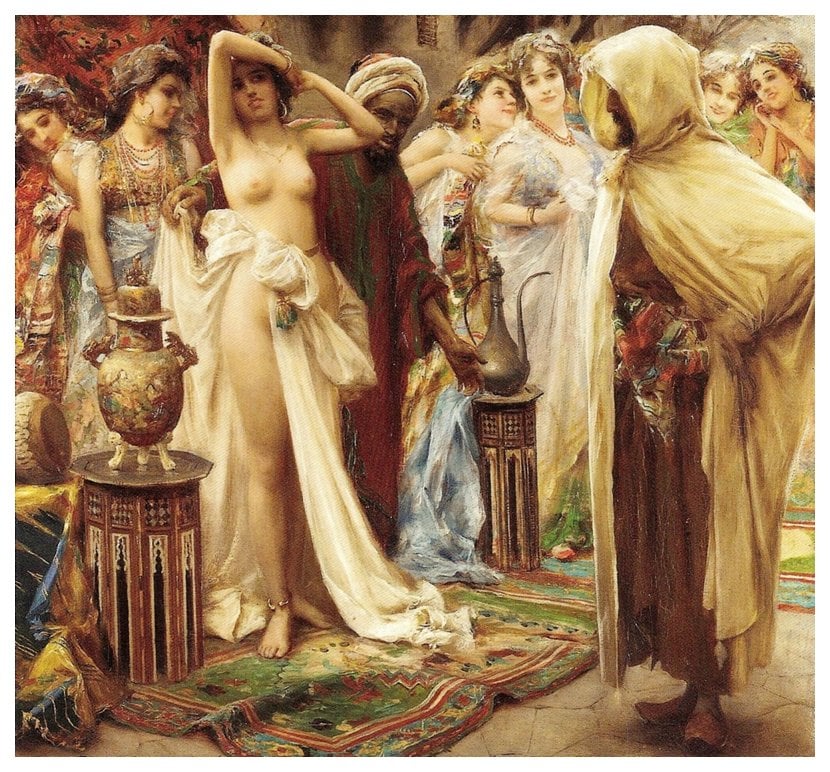
It worked, too. Orientalist paintings with copious nudity sold like hotcakes all over Europe, pouring an endless stream of gold coins into artists’ purses.
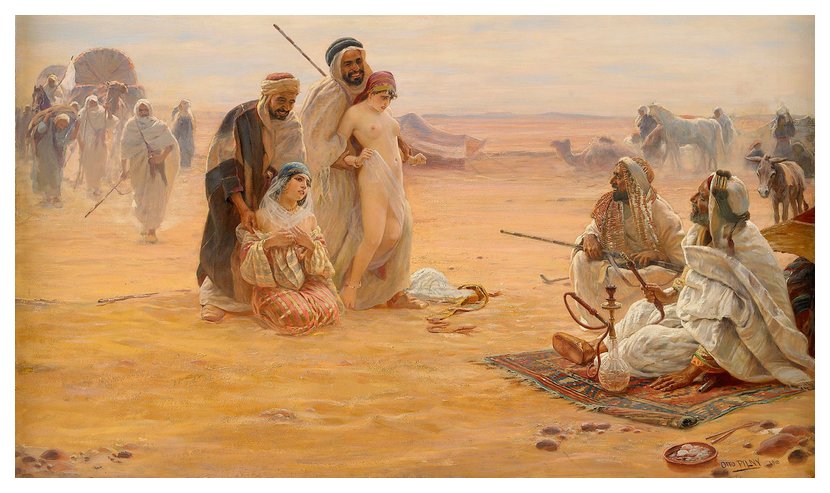
Nowadays, academics and intellectuals sneer at this stuff. It’s imperialistic hegemonic colonialist patriarchal garbage. Just ask anybody who knows how to throw around this kind of jargon, and they will cheerfully tell you! It’s certainly not fine art, horrors no.
On the other hand, if you can find a museum that still displays these pieces, watch the foot traffic. The flooring literally is more worn out in the exhibit areas where this stuff is hung. People like it. A hundred and a half years later, it’s still lewd and salacious and fun. Pretty tame by modern porn standards, but not half bad at all when judged by the standards of its time.



